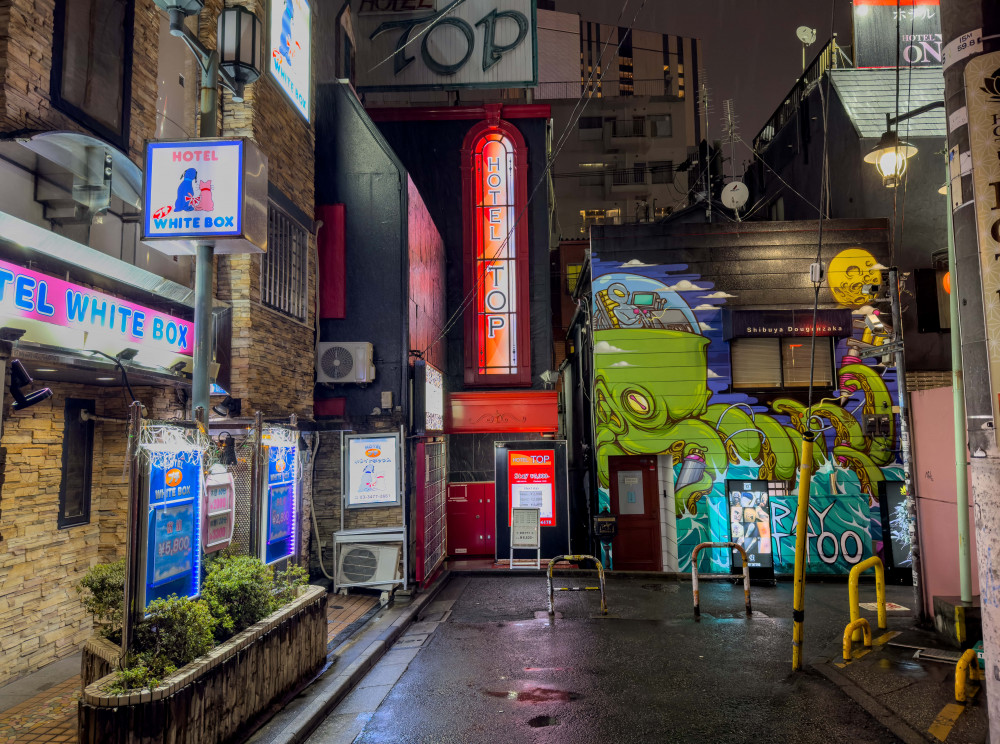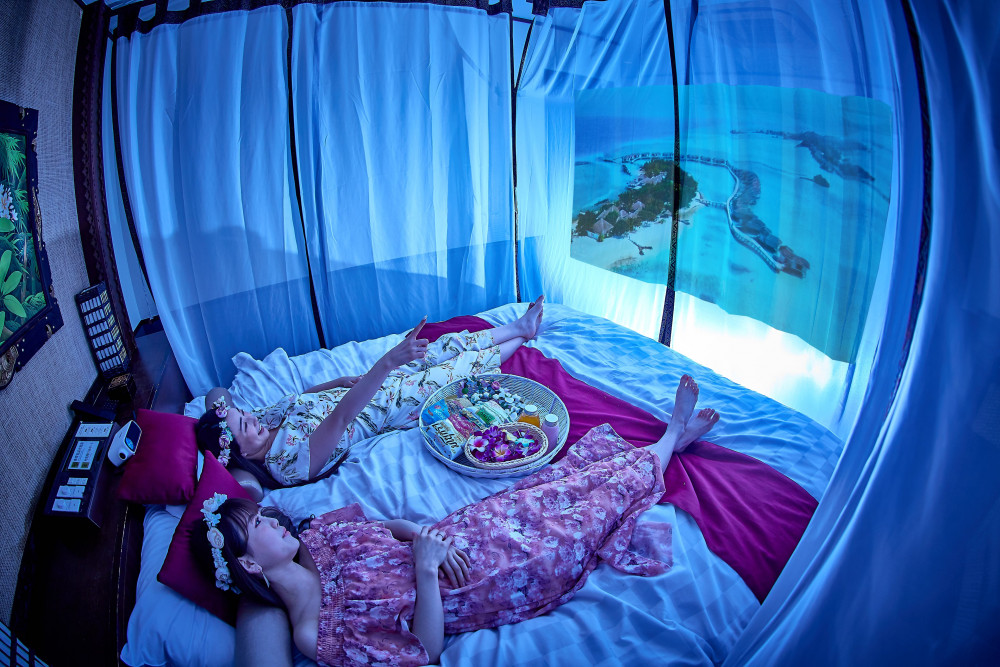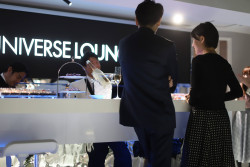
January 4, 2025
Love Hotels in Japan: From Edo-Era Eroticism to Modern Retreats
The storied past and present-day role of Japan’s love hotels
“¥8,000 for 90 minutes or ¥11,000 for 12 hours.” The neon sign flashed outside a building just off the main road in Shibuya. I’d only recently moved to Tokyo, and seeing that gaudy sign in front of a narrow, dimly lit doorway, I’ll admit—there was a moment of panic. My first thought was that I’d somehow wound up in a red-light district. So I started backtracking, hoping no one would notice my rookie mistake.
But curiosity got the best of me. After chatting with friends and doing online research, I realized I’d stumbled on something completely normal: love hotels in Japan. They’re almost as common as convenience stores, and no one bats an eye when they pass them. As it turns out, these fixtures have long held an important place in Japanese society. They aren’t quite the risqué destinations I’d imagined.

Love Hotels in Japan: From Edo Origins to Showa Flare
Love hotels in Japan are said to originate from the Edo period (1603–1868) when Tokyo was still known as Edo. Back then, the city was made up of dense, wooden buildings, and privacy was hard to come by. The ruling samurai class, bound by codes of honor and reputation, was expected to keep a squeaky-clean image. But, being human, they had desires and needs like anyone else.
To meet this need, discreet “teahouses”––known as deai chaya, or “lovers’ teahouses”––were established. These places were designed with hidden entrances or tunnels so customers and workers could come and go without attracting attention.
Over the centuries, this idea of a private retreat stuck around. By the Showa era (1926–1989), these “love hotels” transformed again––this time into themed, colorful places that offered a temporary escape from the routines of daily life. As Japan’s economic boom brought new prosperity, the love hotel landscape grew with it. These hotels evolved into elaborate getaways in the 1970s and 80s. They captured the world’s attention with neon exteriors and fairytale-core interiors with kitschy decor that borrowed Western storybook aesthetics.
You might also be interested in our article: Life as a Kabukicho Bunny Girl: Becoming a nightlife worker in Tokyo’s red-light district.
A Reflection of Japan’s Changing Social Landscape
Many equate love hotels to seedy pay-by-the-hour motels found in other countries, but it’s more nuanced than that. As women’s roles in Japanese society evolved, so did the clientele and purpose of these hotels. Love hotels went from spaces where a man might take a date to places where both partners actively chose together.
This marked a big shift in how love hotels operated and, eventually, how they looked. By the end of the 1980s, the hotels began to mellow their appearance to attract a wider range of guests. Love hotel researcher Ho Swee Lin even attributes the continuing success of love hotels today solely to the sexual liberation of women in Japan.
In the eyes of many Westerners, Japanese love hotels might evoke images of forbidden affairs, risqué encounters, or even kinky places for sex games. This perception, as Sarah Chaplin explores in her book Japanese Love Hotels: A Cultural History, reinforces stereotypes of Japanese society as promiscuous. Today, however, love hotels serve a practical purpose. They offer a safe and private escape for young couples in a culture where living in close quarters with family until marriage is common.
Yes, sometimes they’re used for quick sexual escapades. But in many cases, love hotels are quite literally the only place where couples can have a moment of private intimacy.
Today’s Love Hotels in Japan—Modern and Multifaceted
For the more adventurous, love hotels still offer themed rooms to sleep under a faux starry sky or in a medieval castle. These hotels have increased their amenities offering rooms with jacuzzis, karaoke machines and massage chairs.

The Bali An Group, for instance, even has rooms large enough for joshi-kai or girls’ nights out. Groups can book for birthdays or just a night of fun. There are even party rooms that fit up to 10 guests. Others also take advantage of them as a place to crash after missing the last train. They’re affordable, comfortable and don’t require a reservation. Websites like Happy Hotel and Couples Navi list and rank love hotels in Japan, making it easy to find options that range from bizarre to luxurious.
For locals, love hotels are an unremarkable part of life. But they tend to fascinate tourists and expats, who see them as one of Japan’s mysterious quirks. And while their history may be complex, their role today is simple. They are Japan’s answer to balancing communal living and personal freedom.
Read next: Beginner’s Guide to Love Hotels in Japan.







